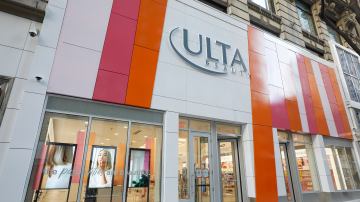Luxury brands are increasingly turning to young athletes as ambassadors to tap into their authenticity and global cultural relevance. Compared to traditional celebrities, athletes often better resonate with Gen Z and millennial consumers who value transparency and purpose-driven marketing — athletes are often seen as more authentic than celebrity faces.
In July, Canadian luxury outerwear brand Mackage launched its latest “Protect Your Craft” campaign, for fall 2024, featuring football club Manchester City’s star defender, Joško Gvardiol. Gvardiol has been known as the most expensive defender in football history since his £77 million ($94.5 million) transfer to Manchester City in 2023.
To ensure significant attention, the campaign debuted just before Manchester City’s pre-season match against AC Milan at NYC’s Yankee Stadium. Within the first six weeks, the campaign garnered over 639 million impressions across 60 global publications. And the corresponding Instagram Reels video received 10 times more views than the brand’s other videos, on average. Gvardiol has 1.5 million Instagram followers, which helped amplify the reach of the campaign to audiences across Europe, Asia and North America.
“Athletes like Joško also bring a new level of engagement to the brand, especially through their social media presence,” said Tanya Golesic, CEO of Mackage. “Social platforms allow athletes to connect with their fans in a direct and authentic way, and when they share their connection to Mackage, it resonates with audiences on a much deeper level than traditional advertising.”
Of course, engagement is not the only thing brands should seek with athlete partnerships. “The deeper impact” is also important, said Kaila McWilliams, CMO at Smith&Saint, an attorney-led talent agency for athletes that works with Olympic gymnast Suni Lee, among others. “We look at how the collaboration affects brand perception and awareness: Are people seeing the athlete or brand in a new, positive light because of the athlete’s involvement?” Athlete partnerships should authentically align with the athlete’s personal brand, while also making a long-term impact via more reach or connections or a strengthened relationship to serve as the foundation for future collaborations, she said.
With Gvardiol, Mackage’s focus was on building a long-term relationship that would allow Gvardiol to grow with the brand.
“Athletes are often held on a pedestal, making their credibility paramount,” said Madison Smith, co-founder of Smith&Saint. “So, understanding our athlete’s and the brand’s core values is crucial when exploring a potential partnership. Honest communication early on in the relationship, aligning on content and messaging that feels authentic to our athlete, and analyzing the demographics of both audiences to see if they align are all steps in our exploratory process. Collaborating with like-minded brands reinforces an athlete’s authenticity and strengthens trust with their followers.”
Privately-owned Mackage is sold in over 40 countries worldwide and operates 11 brick-and-mortar stores across North America, alongside a robust e-commerce platform. Golesic declined to share current revenue only stating that the company has seen steady growth. The brand has long dressed athletes on NBA, NFL and European football teams.
For its part, Mackage has continued to work with athletes because “their personal brand is built on dedication, discipline, and performance, which naturally aligns with what Mackage stands for: craftsmanship and functionality,” Golesic said. “They aren’t just promoting a lifestyle, they’re living it.”
While Mackage does partner with celebrities including Lil’ Kim and Alexander Skarsgård, the resulting engagement across social and global audiences is less than when working with athletes.
“With influencers or celebrities, there’s often a transactional feel,” Golesic said. “Consumers are savvy, and they know when someone is simply endorsing a product for a paycheck. But with Joško, the connection is deeper. He genuinely uses our products.”
Identifying that Gvardiol was a fan of the brand was the first step in establishing the official partnership. The next step was developing the contract.
“It involves understanding clients’ needs and making sure we’ve thought of every hypothetical and have a clear solution in place for it, setting guardrails for the partnership that both parties feel comfortable with,” said Britt St. George, CEO and founder of Smith&Saint. “We like to get as specific as possible before the execution of any agreement, reviewing nitty gritty details like scripts and storyboards, as well as high-level messaging to avoid running into snags down the road that our client may not feel comfortable with. We also like to put in place reciprocal morals clauses.”
In addition, Mackage explored the potential for the collaboration to dilute the brand’s exclusivity. “We have very clear guidelines around the athletes we work with,” said Golesic. “We don’t want them associated with competitors.”
“Going into a negotiation, we’re mindful of any higher-level associations’ existing ambassadors to understand what implications may be ahead of further discussion,” said St George.
“From there, we can start discussing the larger campaign,” Golesic said.
According to McWilliams, long-term partnerships are now more common for athletes, compared to past years. “We find the most success with those long-term brand partnerships, where their audience is seeing the brand organically show up in their everyday life through multiple touchpoints,” said McWilliams. “It’s about building something authentic that can grow over time. So, we’ll negotiate flexible terms, while keeping the athlete’s POV at the center.”




